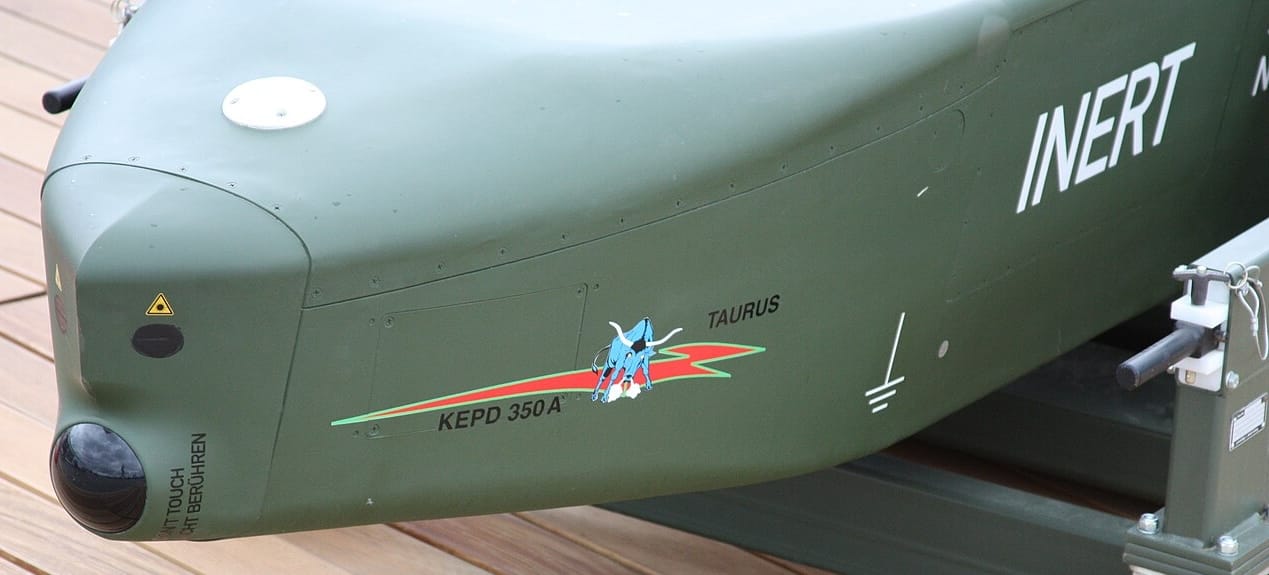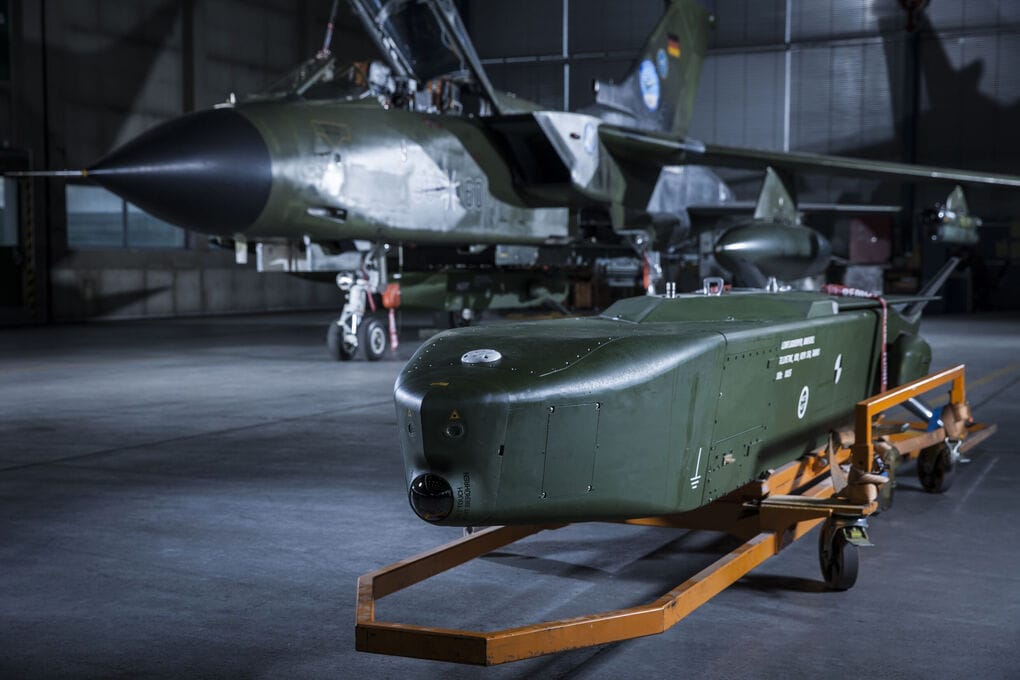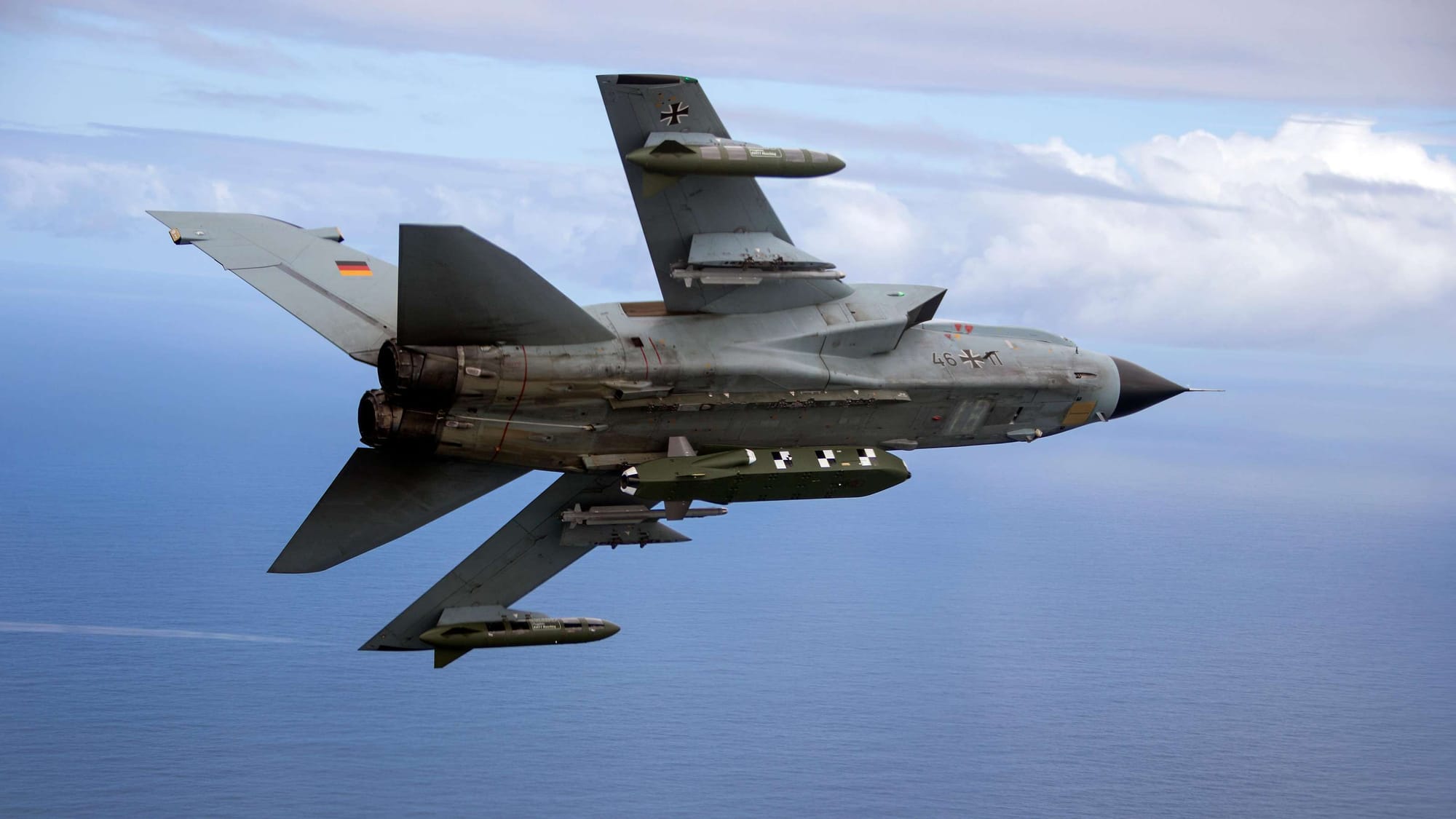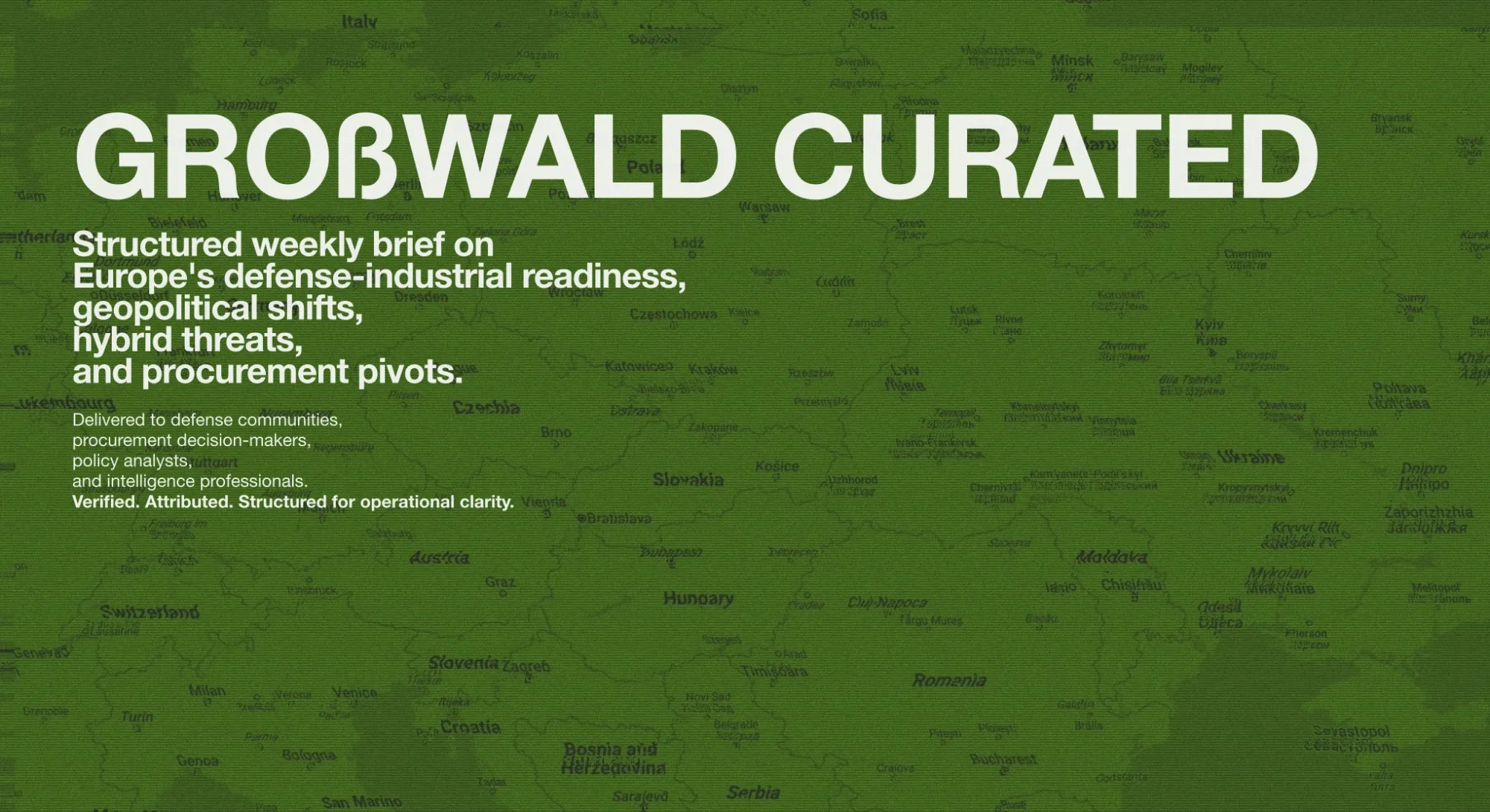Germany Lifts Strike Limits: Taurus Missiles, Coalition Rifts, and Ukraine’s Long-Range Arsenal
A full-spectrum briefing on Germany’s range policy reversal: internal coalition divides, allied coordination, and the strategic impact of lifting strike limits for Ukraine.
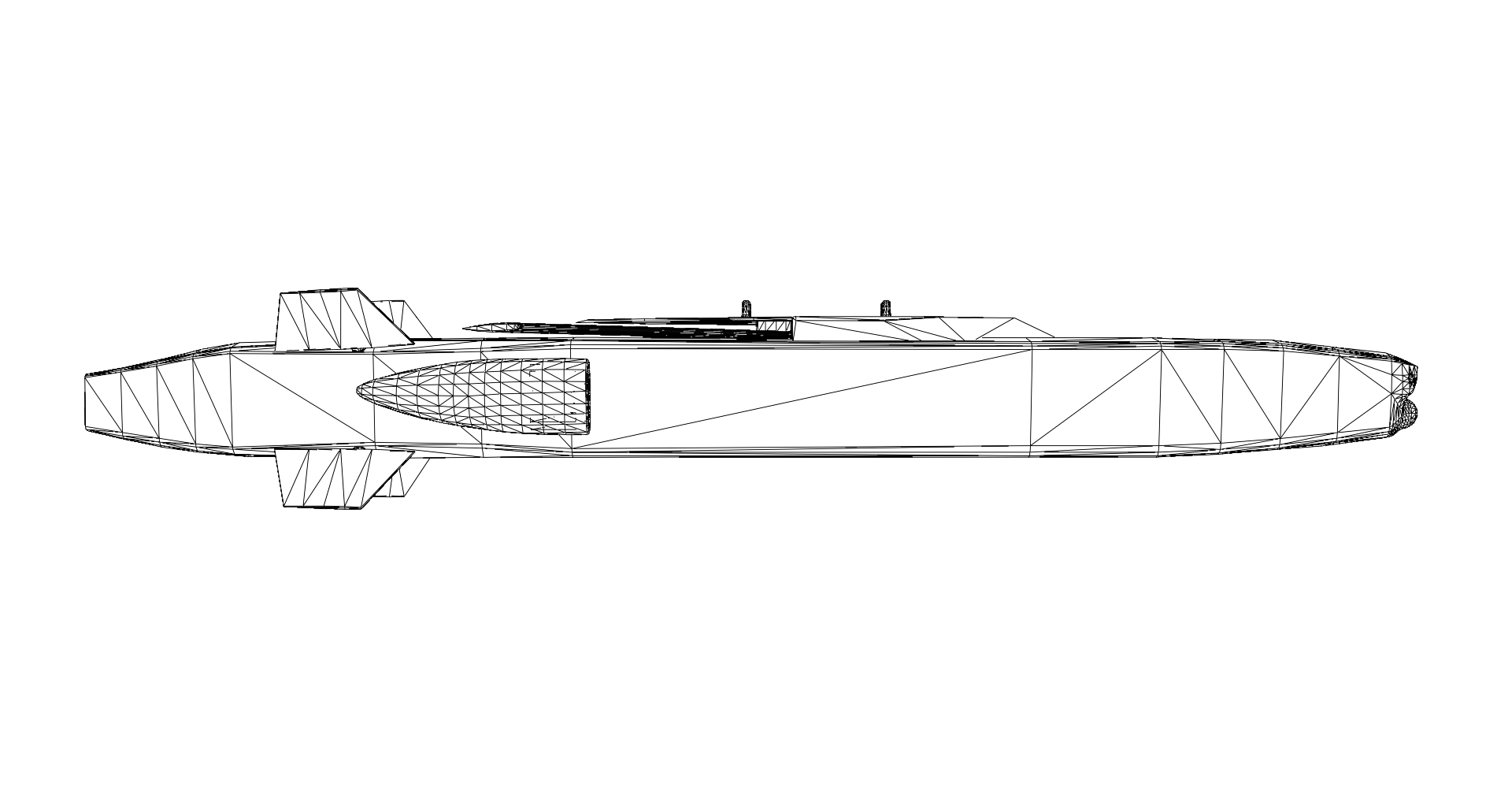
Germany’s new Chancellor Friedrich Merz has declared the end of range restrictions on Western weapons sent to Ukraine—reigniting speculation over the long-delayed Taurus missile transfer. This in-depth briefing traces the policy reversal, internal coalition divides, Ukrainian expectations, and what Taurus could mean for the battlefield and NATO’s eastern posture.
Germany’s reluctance to supply Taurus—first documented in Großwald’s February 2024 analysis ‘Inside Berlin’s Taurus Deadlock’—became a metonym for Berlin’s strategic caution in the face of Russian escalation. But in late May 2025, newly installed Chancellor Friedrich Merz signaled a dramatic policy realignment—declaring that Western-supplied weapons for Ukraine would no longer be bound by range limitations.
This decision—framed as a strategic necessity in the face of intensified Russian strikes—comes amid mounting pressure from Kyiv, growing allied consensus, and persistent internal debate within Germany’s new grand coalition. While Taurus missiles have not yet been officially transferred, Merz’s remarks mark the clearest indication yet that delivery is imminent.
This Großwald briefing breaks down the current status of Taurus supplies, internal coalition fault lines, international reactions, and the operational impact of a potential Ukrainian deep-strike capability shift.
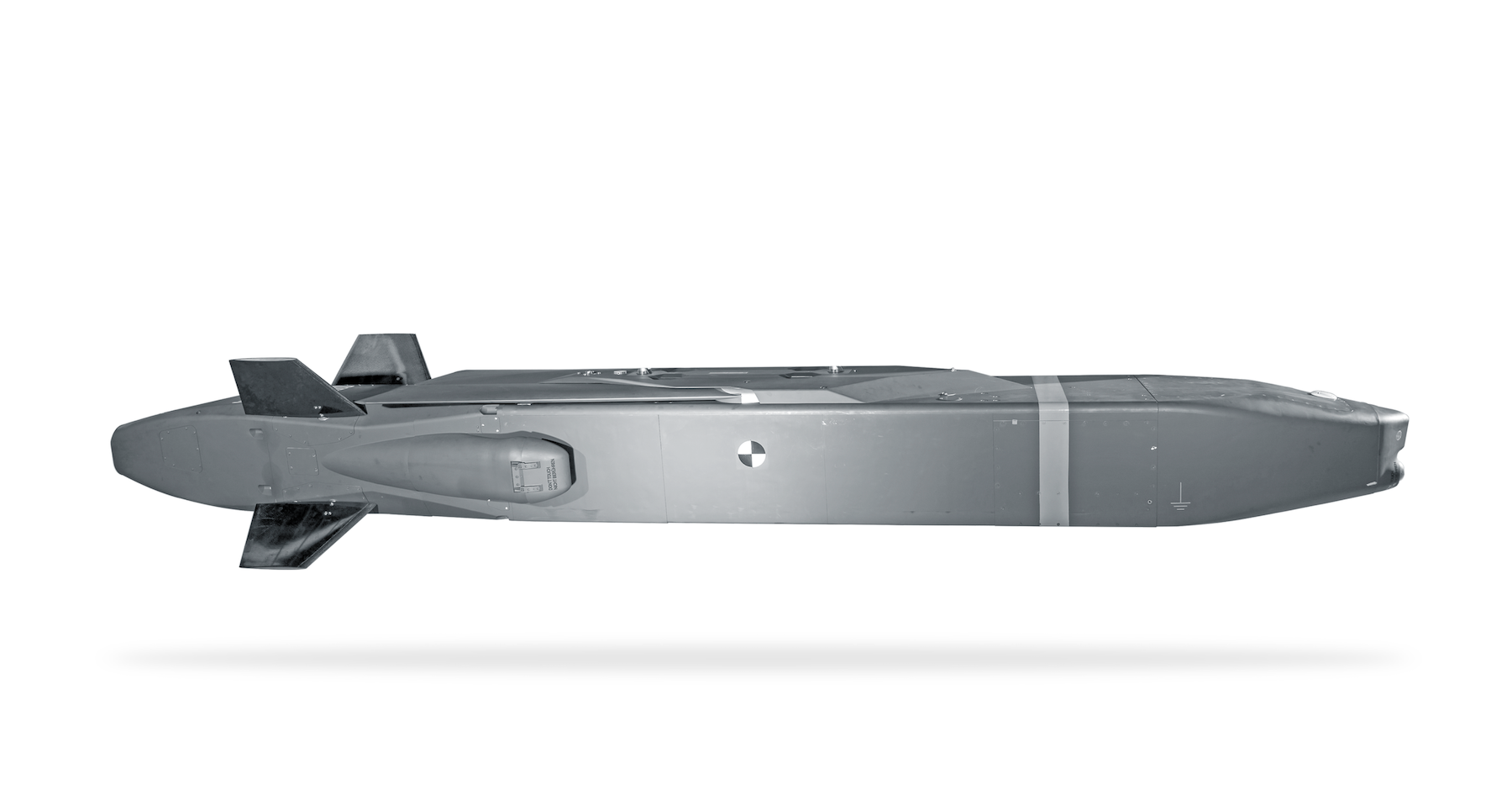
The German-Swedish Taurus is an air-launched precision cruise missile with a range of ~500 km, capable of striking high-value targets deep behind enemy lines. It has been at the center of recent debates on bolstering Ukraine’s long-range strike capabilities. politico.eu defensenews.com
Merz Lifts Range Restrictions: Late May 2025 Statements
German Chancellor Friedrich Merz announced a major policy shift in late May 2025: Germany and its key Western allies have “no longer any range restrictions” on weapons provided to Ukraine. Speaking at the WDR Europaforum in Berlin on May 26, Merz declared that “neither by the British, nor by the French, nor by us, nor by the Americans” are there limitations on how far Ukrainian forces may strike with donated arms. This effectively endorses Ukraine’s right to hit military targets on Russian territory: “Ukraine can now defend itself, for example, by attacking military positions in Russia… [it] didn’t do that until recently. It can now do that.” Merz justified the change as a necessary response to intensified Russian attacks (citing Russia’s largest drone barrage of the war that week) and emphasized that only by lifting range limits can Ukraine “defend itself… by long-range fire” against an aggressor targeting civilians theguardian.com.
Notably, Merz’s remarks mark a break from the previous Scholz government’s stance. Former Chancellor Olaf Scholz had repeatedly refused to send Taurus long-range missiles or allow strikes into Russia, citing escalation risks politico.eu aa.com.tr. Merz openly criticized that caution while campaigning, signaling he was “open” to delivering Taurus provided allies agreed politico.eu. At the forum, Merz stopped short of outright confirming a Taurus transfer, but pledged that Germany would “do everything” in its power to support Ukraine militarily. He also noted that Western allies France and the UK have already supplied comparable Storm Shadow/SCALP missiles, and the U.S. had eased its own usage restrictions months ago. Indeed, Merz later clarified that he was describing an understanding reached “months” earlier: countries that once imposed range limits “have long since abandoned these requirements,” effectively acknowledging a quiet shift that had been underway.
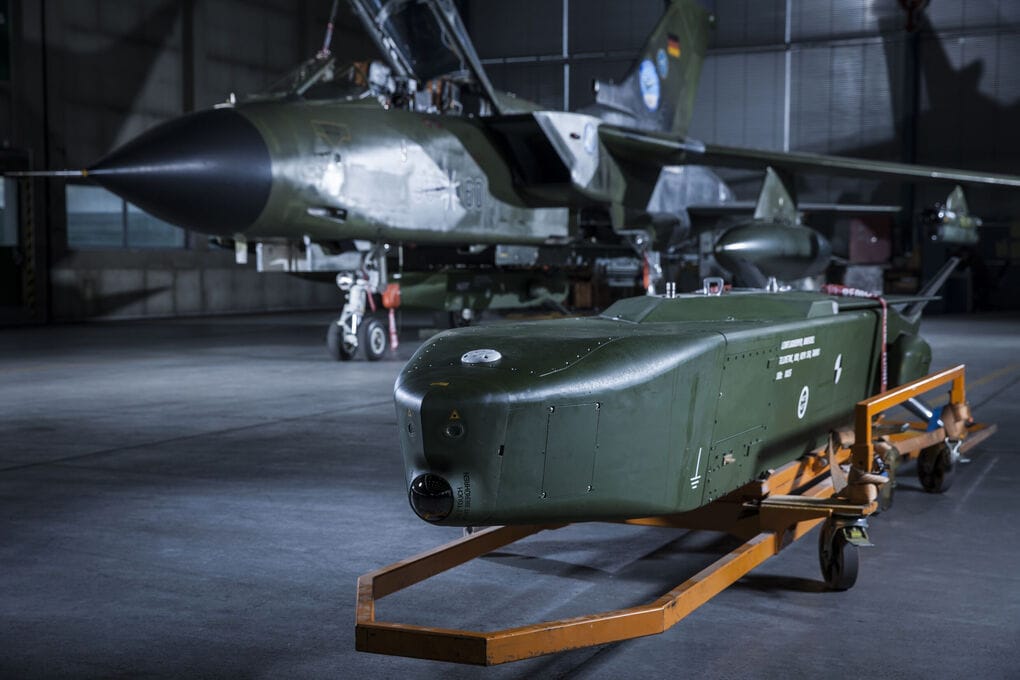
Merz’s comments also introduced a new policy of “strategic ambiguity”. Citing the need not to telegraph intentions to Moscow, Merz indicated Germany would no longer publicly disclose details of what weapons it sends to Ukraine politico.eu. “Putin… should not be able to find out what Berlin’s intentions are simply by watching the German TV news,” Merz argued, preferring secrecy in arms deliveries theguardian.com. In fact, as of mid-May, the German government stopped publishing its once-regular updates of military aid shipments defensenews.com. This marked a deliberate pivot from the Scholz-era transparency in arms transfers—an issue Großwald Curated began tracking in No. 17 (‘From Delivery Lists to Delivery Denial’), aiming to keep Russia guessing and avoid internal political fights over each weapons package.
Merz’s late-May pronouncements have been seen as a historic shift in Germany’s security policy, coming just weeks after he took office. “There are no more red lines on range” for Ukraine, as one analysis put it – a stance backed by Britain, France, and the U.S. as well. While Merz did not explicitly name the Taurus missiles in his speech defensenews.com, the implications were clear: the main barrier to providing Ukraine with Germany’s Taurus long-range cruise missiles – fear of Ukrainian strikes inside Russia – is being removed in principle. Merz himself noted that a country forced to only defend on its own soil “is not defending itself properly,” underscoring his view that Ukraine must be able to hit the aggressor’s military infrastructure even across the border suspilne.media.
German Government Responses and Reactions
Merz’s statements immediately prompted responses from within the German government, revealing some internal disagreement in the new grand coalition. Lars Klingbeil, Vice-Chancellor and Finance Minister (and leader of the SPD, Merz’s junior coalition partner), publicly contradicted Merz’s remarks on the same day. “There is no new agreement that goes beyond what the previous government had in place,” Klingbeil told reporters on May 26, indicating that officially no policy change on range limits had been decided by the coalition politico.eu. This pointed comment, coming just hours after Merz’s forum speech, created confusion about Germany’s stance. By the next day, Merz clarified that he was referring to an existing allied understanding (as noted above), not announcing a fresh German decision. Still, Klingbeil’s intervention suggests the SPD is cautious – effectively signaling that Merz’s words did not (yet) equate to a formal government green light for longer-range German weapons use.
Other members of government offered differing emphases. German Foreign Minister Johann Wadephul (CDU) defended the removal of limits as a “logical response” to Russia’s escalatory air terror bbc.com. In Lisbon on May 26, Wadephul said allowing Ukraine long-range strikes was a necessary answer to intensified Russian drone and missile attacks on civilians. This reflects the CDU side of the coalition backing Merz’s tougher line. On the other hand, Defense Minister Boris Pistorius (SPD) – who retained his post in the Merz government usnews.com – has remained the coalition’s internal brake—a role consistent with his April 2025 objections detailed in Curated No. 19. In April 2025, as Merz was poised to take power, Pistorius voiced skepticism about delivering Taurus missiles. “There are many good arguments against it,” he said of a Taurus transfer, adding that some reasons were “confidential… about security” that could not be discussed publicly aa.com.tr. He hinted at classified concerns, which likely refer to operational risks or the need for German personnel to support the system – a factor Scholz’s government had cited privately. Pistorius even quipped (with evident frustration at the public pressure) that he didn’t understand “where this erotic relationship with weapons came from” in the Taurus debate english.nv.ua, underscoring persistent SPD reservations about rushing to provide the long-range missiles.
Olaf Scholz, now the outgoing chancellor and an SPD elder statesman, has consistently opposed sending Taurus and remained wary of Merz’s pledges. Scholz had long argued that giving Ukraine the 500km missiles could pull Germany directly into conflict with nuclear-armed Russia aa.com.tr. He maintained as recently as December 2024 that Berlin would not approve such deliveries, carefully avoiding the question in public slovoidilo.ua. Merz’s new position is a direct reversal of Scholz’s approach. In a Bundestag exchange recalled by analysts, Merz in late 2024 urged Scholz to at least start training Ukrainian crews for Taurus, so that “if a future chancellor approved the transfer… they could be delivered without delay.” Scholz dismissively retorted: “How did you get the idea that Germany will have a different chancellor than me?” global.espreso.tv. This anecdote, revealed by political scientist Sergej Sumlenny, highlights how contentious the Taurus issue was between Merz and Scholz. Now in May 2025, Merz’s public praise of Scholz’s overall Ukraine policy (he lauded Scholz’s initial “historic” response to Russia’s invasion in his first Bundestag speech as chancellor) comes alongside an implicit critique: that the Scholz government’s red lines were too restrictive.
Meanwhile, Moscow’s reaction to Merz’s announcement was swift and negative. Kremlin spokesman Dmitry Peskov warned that if such decisions to lift range limits were confirmed, they would be “dangerous” and “at odds with [the Kremlin’s] aspirations for a political settlement.” theguardian.com Russian officials have repeatedly threatened that Western-supplied long-range weapons striking Russian territory would cross a serious threshold, even suggesting that a Ukrainian attack using German Taurus missiles would make Germany a direct participant in the war. Russian Foreign Minister Sergei Lavrov went as far as scolding Merz for “encouraging escalation,” according to Russian state media, but Western officials have dismissed such rhetoric as Moscow’s attempt to intimidate. Despite these threats, Merz and allied leaders appear to calculate that not enabling Ukraine to hit Russia’s staging areas is more dangerous in the long run.
Official Ukrainian Responses and Requests
Ukrainian officials have welcomed and encouraged the prospect of receiving Taurus missiles, as they have long pressed for greater deep-strike capabilities. President Volodymyr Zelenskyy has for months lobbied Berlin for the Taurus – first requesting them in May 2023 suspilne.media – and in early May 2025 he voiced “more than hope” that the new Merz government would finally approve the missiles. Following Merz’s late-May remarks on range, there was no immediate formal statement from Kyiv (Ukrainian authorities did not publicly comment on Merz’s Europaforum statements right away bbc.com). However, anticipation in Ukraine is high. Zelenskyy is scheduled to visit Berlin on May 28, a visit that follows his March 2025 appeal to Bundestag leaders—first reported in Curated No. 16— and reports indicate that long-range weapons will be a key agenda item. Ukrainian media suggest Zelenskyy aims to secure a positive decision on Taurus during this trip, as part of discussions on further military aid.
Individual Ukrainian diplomats and defense officials have been outspoken. Andrii Melnyk, Ukraine’s former ambassador to Germany (now deputy foreign minister), published an open letter in April urging Merz to fulfill his campaign promise and “immediately deliver 150 Taurus missiles” upon taking office kyivindependent.com. In the letter (run in Die Welt), Melnyk implored Merz to lead Europe in stopping Russian aggression: “Not only does the future of [Germany] depend on your success as chancellor, but also the fate of Ukraine – and the whole of Europe.”
He listed Taurus deliveries as the top urgent step, writing, “This election promise must be fulfilled, despite expected resistance from the SPD”, and argued Germany need not wait for others’ approval nor fear Kremlin ultimatums. Melnyk’s passionate appeal reflects the Ukrainian view that Taurus missiles could be game-changing “inferno weapons” that should be sent “without ifs and buts” to “change the war’s dynamics at its core.”
Other Ukrainian voices have echoed this. Andrii Sybiha, a senior adviser in Zelenskyy’s office, stated in January that providing Taurus missiles “could significantly influence the situation at the front” slovoidilo.ua. The Ukrainian Defense Ministry has consistently included long-range missiles in its wish-lists, arguing they would help disrupt Russian logistics and save lives by shortening the war. As news broke of Merz’s lifted restrictions, Ukrainian media and officials were optimistic: one Ukrainian defense official (speaking off record) told European Pravda that the development was “only natural given Russia’s escalation” bbc.com. No official “thank you” or confirmation has come from Kyiv yet, likely because Germany has not formally announced a Taurus transfer. Instead, Ukraine is patiently engaging behind the scenes – Zelenskyy’s upcoming meeting with Merz is expected to firm up commitments.
It’s worth noting that Ukraine has already been employing Western long-range systems (British Storm Shadow and French SCALP-EG cruise missiles, and U.S. ATACMS ballistic missiles) to strike high-value targets in occupied Ukrainian territories and even, on occasion, in Russia proper. Ukrainian forces reportedly used Storm Shadows in 2023–2024 to hit Russian air bases in Luhansk and Crimea, and ATACMS strikes in late 2024 took out Russian helicopter pads and ammo depots. These successes reinforce Ukraine’s argument that more such weapons will “help end the war sooner”, as Zelenskyy often says. In fact, NATO Secretary-General Jens Stoltenberg has agreed in principle, noting that “the more credible our long-term military support [to Ukraine], the sooner the war will end” kyivindependent.com.
For Ukraine, receiving the Taurus – with its greater range and penetrating warhead – would expand their long-range arsenal and allow them to hit command centers or supply hubs that so far have been out of reach of Storm Shadow (which has ~250 km range). Ukrainian Air Force crews have already integrated Storm Shadow onto their Soviet-era Su-24M strike jets; they are confident Taurus integration would be achievable on the same platforms. Ukrainian pilots have likely been training for Taurus use informally. Merz himself, back in November 2024, urged starting Ukrainian training on Taurus missiles preemptively global.espreso.tv, indicating such planning may already be underway. Ukraine’s message is clear: when Germany approves Taurus deliveries, Ukrainian forces will be ready to use them effectively against the invaders.
NATO and EU Commentary
NATO officials have generally supported allied decisions to enhance Ukraine’s capabilities, while maintaining that the use of Western weapons on Russian soil is a national decision. In late 2024, NATO’s then-Secretary General Jens Stoltenberg welcomed discussions about allowing Ukraine to strike targets in Russia, but emphasized that “each country must decide” its own policy on long-range strikes reuters.com. Stoltenberg noted that allies had varied approaches previously – some more restrictive than others – and explicitly said he “welcomed” moves to relax those limits, given Ukraine’s need to stop missile barrages at the source. This aligns with the shift Merz announced.
NATO as an organization has not issued a formal statement on Merz’s late-May policy change, but there is an implicit understanding in Brussels that enabling Ukraine’s deep strikes can be strategically sound so long as nuclear escalation is managed. Indeed, by 2025 U.S. officials quietly signaled approval for limited Ukrainian strikes into Russia with U.S.-supplied arms – for example, in May 2024, President Biden agreed to let Ukraine use American weapons to hit Russian sites that were attacking Ukraine’s cities (a permission later confirmed by Secretary of State Blinken) suspilne.media. The UK and France had already shown flexibility by supplying Storm Shadow/SCALP missiles with only informal understandings about target use. Merz’s statement essentially makes Germany catch up to its allies’ stance.
Within the EU, commentary has mirrored NATO’s cautious support. EU foreign policy chief Josep Borrell (a strong advocate of military aid to Ukraine) has not objected to members lifting strike limits; he reiterated that “Ukraine has the right to defend itself across its borders” under international law. Several European leaders, including those of Britain and Poland, have praised Merz’s resolve. The UK government reportedly conveyed that it would “fully support” a German decision to send Taurus missiles kyivindependent.com, given the UK’s own positive experience supplying Storm Shadows. France’s president has similarly indicated that each ally can decide on long-range systems and that France respects Germany’s decision-making on Taurus. No EU country has vetoed or criticized the idea of Germany delivering these missiles – the main hesitations have come from inside Germany itself. At NATO headquarters, the prevailing view is that Western unity is maintained as long as such moves are coordinated. Merz’s insistence on alignment with Britain, France, and the U.S. before acting was meant to ensure no ally was blindsided, and indeed all major Western partners appear to be on board with the new approach.
One point of note: NATO’s collective position remains that it is not directly at war with Russia, and allies supplying weapons act in a national capacity. By removing usage restrictions (which were politically self-imposed), Western allies are still not advocating attacks on purely civilian targets in Russia – only on military infrastructure contributing to the war. Merz underscored this distinction, pointing out that “Ukraine [targets] military goals… Russia is targeting civilians” theguardian.com suspilne.media. NATO’s leadership has repeatedly condemned Russia’s warnings about nuclear escalation as “blackmail”, and they seem to agree that Ukraine striking legitimate military sites, even beyond its borders, is a legitimate act of self-defense. In sum, NATO and EU reactions have been cautiously supportive of Germany’s move, framing it as a logical evolution in support rather than a provocative escalation. The loudest dissenters on the continent have been the far-right and hard-left factions within European countries (for instance, the AfD in Germany and some others who oppose military aid altogether), but they remain minority voices in policy terms.
Status of Taurus Missile Deliveries: Past, Present, Future
As of end of May 2025, Germany has not yet delivered any Taurus missiles to Ukraine, but the situation is rapidly evolving.
Under Olaf Scholz’s chancellorship (2022–2024), all requests for Taurus were blocked or deferred. Scholz’s government feared that giving Ukraine a weapon capable of reaching Moscow or other distant targets could trigger Russian retaliation or even draw Germany into direct confrontation. Additionally, technical concerns were cited: operating the Taurus might require German technical support (for mission planning or targeting software updates), potentially meaning German personnel involvement – a red line for Scholz. Thus, despite Ukraine’s first formal request a year ago and continuous pressure through 2023, no Taurus transfers were approved in that period.
When Friedrich Merz came to power in May 2025 leading a CDU-SPD grand coalition, expectations rose that this policy might change. Merz campaigned on a more assertive stance and indicated he was open to sending Taurus “in coordination with European partners” slovoidilo.ua. Indeed, one of the coalition’s early moves was to clear a new tranche of financing for military aid: in March 2025, the Bundestag’s budget committee approved an extra €3 billion in Ukraine aid, part of which could fund expensive systems like Taurus reuters.com. Merz’s government also lifted a strict debt brake to enable more defense spending, signaling readiness to supply big-ticket items. However, in his first weeks in office, Merz took a cautious tone about Taurus, emphasizing “strategic ambiguity” – i.e. not confirming anything until it’s done. By removing the public range restriction, Merz has set the stage for a Taurus delivery without formally announcing it in advance.
Current status (late May 2025): Germany is widely expected to approve a Taurus transfer imminently, though no official announcement has been made yet. According to multiple reports, planning is underway to send on the order of 100 to 150 Taurus missiles out of Bundeswehr stocks slovoidilo.ua.
As previously noted in Großwald Systems coverage, Germany holds ~600 Taurus units; officials have indicated at least 150 could be made combat-ready on short notice for Ukraine. Building on prior coverage laid out in Curated No. 20 and wider OSINT sources, signs now point to covert preparations for imminent Taurus delivery: the OSINT group Clash Report stated on May 26 that “Ukraine is now highly likely to receive German Taurus missiles” and that “Germany is expected to provide 100–150” of them slovoidilo.ua. This unconfirmed report, amplified in Ukrainian media, suggests that behind-the-scenes approval has been reached, pending a political announcement. It would not be unusual for Germany to hold off public confirmation until Zelenskyy’s visit or until the missiles are about to be delivered – especially given Merz’s policy of not telegraphing specific arms shipments.
German defense industry and military logistics are also prepping for the possibility. The Taurus KEPD 350 is a joint German-Swedish product (manufactured by Taurus Systems GmbH, a partnership of MBDA and Saab), so any transfer might also need Sweden’s sign-off due to export license agreements. Sweden has indicated it would not oppose the re-export to Ukraine, according to European officials, removing another potential hurdle. Another practical step is integration and training: Ukrainian pilots and technicians would need to be trained to employ Taurus from their aircraft. This process has likely started covertly. As noted, Merz and opposition lawmakers urged starting the training months ago. A German military expert, Sergej Sumlenny, confirmed that “if there’s political will, the training can be organized very quickly”, pointing out that technical issues of launching Western missiles from Soviet-era jets – once thought impossible – “have been solved” in the case of Storm Shadow global.espreso.tv. Indeed, Ukraine rapidly integrated Storm Shadows onto Su-24s with help from British and French teams. Similar adaptation for Taurus is feasible, as the missile is physically and functionally akin to Storm Shadow (it even uses the same drop-launch method). The main integration difference might be software, but experts say Ukraine’s programmers can handle targeting interfaces if provided the data.
As for timelines: If approval is given in the coming days, the delivery could occur within weeks thereafter, factoring in final checks and pilot instruction. However, given Merz’s pledge not to announce deliveries, the public may only learn of it after the fact (e.g. when Ukraine actually employs the missiles in combat or via a Bundestag disclosure). Germany did something similar with certain arms before – for instance, it kept quiet on some IRIS-T air defense battery shipments until they were in Ukraine. Going forward, the policy change to secrecy means we might see “delivery by stealth.” Nonetheless, Ukraine’s allies will be informed via back channels, and Russia will certainly notice once Ukrainian forces start hitting targets at ranges previously unattainable.
In summary, no Taurus missiles have been delivered yet (as of May 27, 2025), but political conditions now strongly favor it happening. Scholz’s earlier veto is gone; Merz’s coalition appears to be inching toward consensus (even if SPD members are anxious). Germany’s own stockpile is sufficient to spare ~100+ units without undermining its defense. Financial and training arrangements are being sorted out. All signs suggest that Taurus deliveries are on the horizon, likely to be part of a new wave of support as Ukraine’s anticipated summer operations ramp up.
Expert Analysis and Strategic Impact
Military analysts and defense strategists broadly agree that supplying Ukraine with Taurus missiles would have a significant strategic impact – while also carrying certain risks that need managing. The Taurus KEPD 350, with its 500+ km range and 481-kg dual-stage warhead, would be “the most capable long-range strike system” in Ukraine’s arsenal. It is designed to penetrate hardened targets (like bunkers or bridges) with extreme precision. Experts note that Taurus could enable Ukraine to disrupt Russian logistics hubs, command centers, ammunition depots, and supply lines far behind the front lines – including sites in Crimea or even inside Russian territory that support the war effort. In April, Merz himself (reflecting expert views) argued that Taurus strikes could sever Russia’s supply routes to Crimea and thus “qualitatively change the course of the war” in Ukraine’s favor slovoidilo.ua aa.com.tr. By hitting key nodes like rail junctions, air bases, or troop concentrations well beyond the reach of HIMARS rockets or shorter-range drones, Ukraine can complicate Russia’s ability to sustain offensive operations. Defense observers estimate Ukraine has already received a few hundred Storm Shadow/SCALP missiles from the UK and France and under 50 ATACMS missiles from the US defensenews.com. These have been used effectively, but stocks are limited – adding ~100 Taurus would extend and intensify Ukraine’s deep-strike campaign.
Analysts at the Royal United Services Institute (RUSI) and other think-tanks believe the West’s removal of range limits is “long overdue”. In their view, Russia has been launching cruise missiles, drones, and even air strikes from well within its territory with impunity; allowing Ukraine to hit those launch sites or supply depots is simply leveling the playing field. Gustav Gressel, a security expert at ECFR, points out that Russia’s nuclear saber-rattling previously deterred such moves, but by 2025 the West recognizes that controlled Ukrainian strikes have not provoked uncontrolled escalation. In fact, since late 2024, Ukraine has quietly struck several military targets inside Russia (e.g. airfields in Pskov and Belgorod regions) using drones or special forces, and Russia’s response did not cross any “red button” threshold. This bolsters the argument of experts like Phillips O’Brien that Western powers should “not overly self-deter” and instead give Ukraine the tools to hasten Russian military setbacks kyivindependent.com.
That said, military strategists also caution about operational and escalation risks. The integration and use of Taurus missiles will require careful targeting to avoid incidents that could be politically sensitive (e.g. striking too deep into Russia or hitting civilian infrastructure by error). As Pistorius hinted, some concerns are classified – one likely issue is ensuring that any German-provided targeting data or guidance support does not make German personnel co-belligerents. Berlin will presumably mitigate this by handing over the missiles with the necessary software and leaving targeting entirely to Ukraine (similar to how the UK handled Storm Shadow transfers). Training Ukrainian crews is another consideration: however, as noted, this can be done relatively quickly and possibly has been ongoing under secrecy. The timeline for deployment could also depend on any modifications needed – for instance, some reports in 2023 suggested that Taurus missiles might need minor software tweaks to prevent strikes on certain locations (a political safeguard). If such geo-fencing was contemplated, it’s unclear if Merz’s government would implement it; his latest stance suggests a trust in Ukraine’s targeting decisions in line with “military goals, not civilian”ethics theguardian.com.
From an operational perspective, experts like Mick Ryan (retired Australian general) and Justin Bronk (airpower specialist at RUSI) note that long-range missiles are not a war-winning silver bullet on their own, but they are a powerful force multiplier. Each Taurus missile, used against a critical node, can have outsized effects on the battlefield over time – for example, knocking out a major railway bridge could strangle Russian logistics in an entire sector. If Ukraine receives ~100+ Taurus, it will likely employ them judiciously against high-value strategic targets that have so far been beyond reach. Open-source intelligence might soon start spotting the effects of Taurus strikes – e.g. sudden explosions at distant Russian bases – even if neither Ukraine nor Germany openly confirms the use. Analysts will be watching satellite imagery and Russian media for hints of impacts consistent with Taurus’s heavy warhead.
Crucially, Russia’s potential reaction remains a factor in expert assessments. The Kremlin has issued menacing statements (as noted, calling Western long-range missile supply “dangerous”) theguardian.com. However, Western officials and most experts judge that Russia is unlikely to escalate to direct NATO conflict or nuclear use merely over Ukraine hitting military targets on Russian soil. They point out that Russia has already absorbed strikes on bases in Crimea and even the Belgorod region without crossing those lines. NATO’s deterrence posture remains in place to dissuade Moscow from any rash moves. In fact, some analysts argue that giving Ukraine the capability to threaten Russia’s rear forces might pressure the Kremlin towards negotiations by raising the costs of continuing the war. Merz hinted at this as well, saying Western support will strengthen Ukraine’s hand in any future peace talks aa.com.tr.
In the eyes of military strategists, Germany’s eventual delivery of the Taurus would underscore Western unity and resolve. It would close a troubling gap in Ukraine’s armament: while the country has excelled in defense and some local offensives, it lacked the means for truly long-range precision strikes. With Taurus (alongside Storm Shadow and ATACMS), Ukraine could mount a sustained deep-strike campaign to degrade Russia’s war machine over the summer and autumn of 2025. Expert consensus is that this would improve Ukraine’s chances of battlefield success – as long as the supply is sufficiently large and sustained. “A few dozen missiles won’t change the war, but a few hundred might,”one former NATO commander observed, emphasizing that quantity matters because Russia has a lot of depth to its logistics. Germany’s stocks (estimated ~600 units) are ample, but not all are immediately usable without maintenance. If the first batch of ~100 proves effective, analysts suggest Germany could consider sending more later or working with Sweden and manufacturers to produce new ones (the German MoD has even explored upgrading its Taurus missiles in the past year).
Overall, the strategic impact of Taurus deliveries would be significant but not singular. They form one part of a broader shift: the West is now giving Ukraine the means to actively deter and punish Russian aggression at source, not merely defend on Ukrainian soil. Merz’s late-May policy change is thus viewed by experts as a logical (if belated) step that aligns Germany with its allies on long-range support politico.eu. This development, coupled with increased secrecy in arms transfers, reflects a maturation of Western aid strategy – prioritizing battlefield effect over public fanfare. As Germany resolves its internal debates and moves toward action, Ukraine may soon have in its hands one of Europe’s most potent conventional weapons. If and when the Taurus missiles arrive in Ukraine, it will mark a new chapter in Western military assistance – one that Kyiv hopes will hasten an end to the war on more favorable terms.
Key Developments Timeline (May 2025)
| Date(2025) | Development | Details / Quotes |
|---|---|---|
| April 13–15 | Merz (then Chancellor-designate) advocates Taurus; MoD cautious | Merz tells ARD he’d consider sending Taurus to disrupt Russian supply lines (esp. to Crimea) aa.com.tr. Defense Minister Pistorius responds that there are “many good arguments against” delivering Taurus, some too sensitive to discuss publicly aa.com.tr. Scholz’s camp warns against escalation. |
| May 6 | Merz becomes Chancellor; coalition formed | Bundestag elects Merz as Chancellor in a CDU-SPD grand coalition. Pistorius (SPD) stays as Defense Minister usnews.com. Merz in initial statements criticizes prior “red lines” and hints at a new approach but remains noncommittal on specific weapons. |
| May 10 | Merz visits Kyiv; vows secrecy on arms | Merz travels to Kyiv with other EU leaders. He announces Germany will stop publicly reporting new arms packages to Ukraine, to avoid tipping off Russia suspilne.media. (A new aid package is delivered, contents undisclosed.) |
| May 26 | Merz: “No more range limits” | At WDR Europaforum in Berlin, Merz declares “no longer any range restrictions” on Western weapons for Ukrainetheguardian.com. Says Ukraine “can now… attack military targets in Russia” for defensetheguardian.com. Emphasizes long-range strikes are “necessary” given Russia’s drone bombardment. |
| May 26 | Reactions – Allies & Russia | Merz notes UK, France, US all lifted such limits (France/UK already gave Storm Shadow/SCALP)politico.eu. Kremlin’s Peskov calls the move “dangerous… contrary to a settlement”theguardian.com. Russian FM Lavrov and others issue warnings. |
| May 26 | German Govt split signals | Vice-Chancellor Lars Klingbeil (SPD) says “no new agreement” was made in the coalition on range limitspolitico.eu, implying Merz’s statement is not an official policy shift. Foreign Minister Johann Wadephul (CDU) however calls it a “legitimate response”to Russian terrorbbc.com. Media note internal disagreement. |
| May 27 | Merz clarifies stance | In a press conference in Finland, Merz explains he was describing a change that “has been happening for months” – allies long ago abandoned range limits politico.eu. He says he was not announcing a new German decision but states “Ukraine has the right to use [Western weapons] beyond its borders against military targets.” |
| May 27 | Speculation of Taurus delivery | OSINT group Clash Report and Ukrainian outlets claim Germany is likely to send 100–150 Taurus missiles soon slovoidilo.ua. No official confirmation, but Zelenskyy’s upcoming Berlin visit (May 28) expected to firm up the deal bbc.com. |
| May 28(proj.) | Zelenskyy in Berlin | Zelenskyy meets Merz and German leaders. Expected discussion of Taurus and other aid. (Outcome TBD: possibility of a joint statement or behind-closed-doors agreement on long-range missiles.) |
| Forward | Implementation | If approved, training of Ukrainian crews (already urged back in Nov. 2024) could be finalized global.espreso.tv. Delivery of missiles could follow quietly. Ukraine to potentially deploy Taurus against high-value targets (e.g. Crimea bridge, supply depots) upon receipt. |
Related Großwald Reporting
